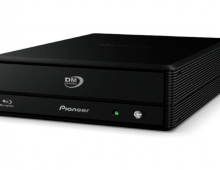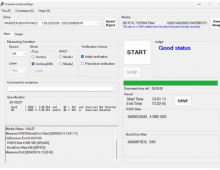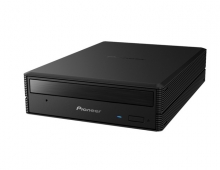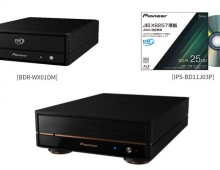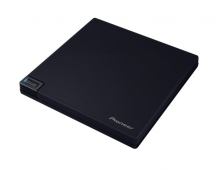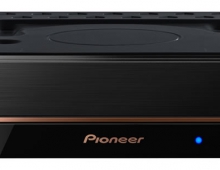
Pioneer crams 510GB onto 'DVD'
Pioneer has developed a technology to allow it to cram 510GB of data onto a disc the size of a DVD, the company announced.
The technology uses an electron beam to make templates from which optical discs can be stamped, Michiko Kadoi, a company spokeswoman, said last week.
While Pioneer has no immediate plans to commercialize the technology, it believes it could be used to make both recordable and read-only discs with more than 100 times the capacity of today's 12-cm DVDs.
"We successfully recorded 348GB, 424GB and 510GB on 12-cm discs," Kadoi said.
As with other recent advances in optical disc technology, Pioneer's method relies on cramming data closer together to achieve a higher capacity.
Today's standard DVDs have a capacity of 4.7GB. The data is stored as "pits" in the disc which can be read as ones and zeros. The pits today are spaced 740 nanometers apart, Kadoi said.
A newer disc technology that came to market recently uses a blue laser, which has a shorter wavelength, to achieve about five or six times the capacity of DVDs. The shorter wavelength means the size of the pits, and the spacing between them, can be made smaller.
Pioneer's electron beam allows the spacing between the pits to be made even smaller -- as little as 70 nanometers -- allowing the company to make discs with a capacity of up to 510GB.
Pioneer's technology is more advanced than the laser technology used for newer types of optical disc formats, including HD-DVD, Blu-ray Disc and UDO (Ultra Density Optical), the company said.
While Pioneer has no immediate plans to commercialize the technology, it believes it could be used to make both recordable and read-only discs with more than 100 times the capacity of today's 12-cm DVDs.
"We successfully recorded 348GB, 424GB and 510GB on 12-cm discs," Kadoi said.
As with other recent advances in optical disc technology, Pioneer's method relies on cramming data closer together to achieve a higher capacity.
Today's standard DVDs have a capacity of 4.7GB. The data is stored as "pits" in the disc which can be read as ones and zeros. The pits today are spaced 740 nanometers apart, Kadoi said.
A newer disc technology that came to market recently uses a blue laser, which has a shorter wavelength, to achieve about five or six times the capacity of DVDs. The shorter wavelength means the size of the pits, and the spacing between them, can be made smaller.
Pioneer's electron beam allows the spacing between the pits to be made even smaller -- as little as 70 nanometers -- allowing the company to make discs with a capacity of up to 510GB.
Pioneer's technology is more advanced than the laser technology used for newer types of optical disc formats, including HD-DVD, Blu-ray Disc and UDO (Ultra Density Optical), the company said.

